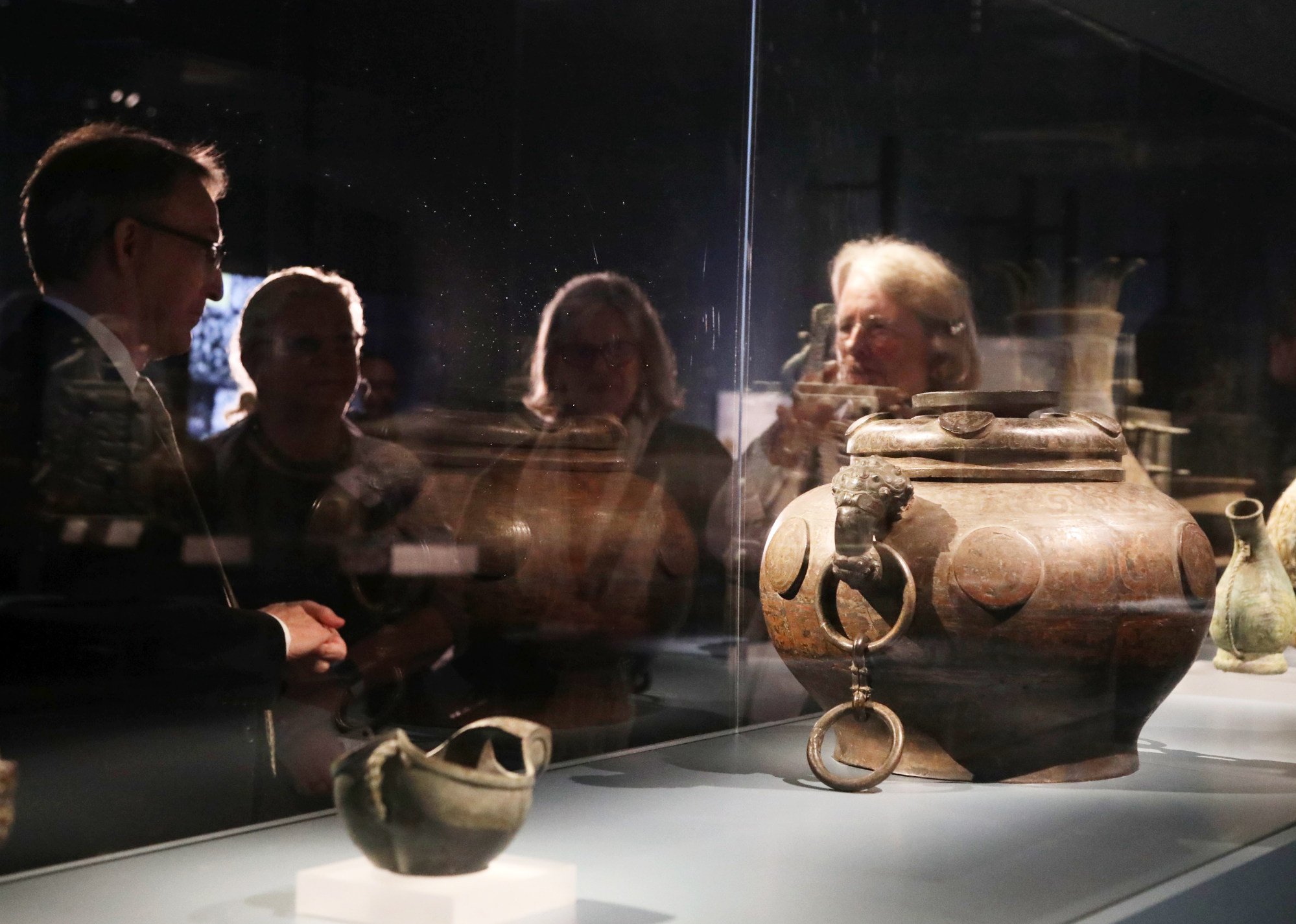
Ancient artefacts can bridge US-China ties, if we tell the right story
- While US interest in Chinese work may be limited, more Americans might care if the narrative includes their efforts to return lost relics
If the approach is merely showcasing the finest examples of Chinese culture and art, the effect will be very limited – even if it is the first time to share such heritage with the outside world. Put simply, it is one-sided lecturing.
People involved in the presentation may get very excited, but listeners can grow bored quickly. We have all seen the scenario play out again and again, either as a parent, a teacher or someone just trying to help.
As expected, the exhibition’s organisers are very excited, stressing that some of the artefacts have never been outside China until now, especially considering it’s a rare chance for American audiences to appreciate the richness of Chinese history and traditions. The organisers say these kinds of exchanges can help build trust, start dialogue and perhaps “heal the gap” between the two nations.

While the total number of visitors was not mentioned, the curator said it was toured by nearly 1,000 students and teachers from public and private schools in Washington, Maryland and Virginia during its two-month run, which he considered a far-reaching impact. It must be mentioned that Anyang is included in the curriculum for schools in these areas.
There are more than 3,500 public schools in Washington, Maryland and Virginia, with well over 2 million students. Of course, that is not even counting private schools. Granted, it may not be easy for some schools to organise a field trip, but 1,000 out of millions over a two-month period is rather tiny.
Although this type of exhibition has limited appeal, it does not mean ancient Chinese artefacts cannot be used to foster ties between China and the US – if we know what the right points of connection are.

Rather than focus on how old and magnificent Chinese civilisation is, the message could be on how the US is helping China restore its cultural identity by returning its long-lost artefacts.
To stress that some artefacts have never been outside China is pointless. There has never been a shortage of them for well over a hundred years. Millions of cultural relics have been lost due to wars and smuggling. The narrative should be focused on them returning.
We can only imagine how hard it is and how many experts need to get involved to track down these stolen relics, as well as recover, store, care for them and go through the necessary procedures to return them.
But it is all worth it. To quote Matthew Bogdanos, chief of the Antiquities Trafficking Unit at the Manhattan District Attorney’s Office, “The repatriation of lost cultural relics to their country of origin is a righteous act. The US is willing to work together with China to protect the shared cultural heritage of humanity”.
This is where cultural relics show genuine power to connect people and bridge differences, and for getting China and the US to demonstrate mutual respect, cooperation and trust.
Therefore, exhibitions should be curated based on two storylines – showcasing magnificent archaeological discoveries, which Chinese people are very proud of, and also how these artefacts were once lost and made their way back with the help of Americans. Along with sharing the historical facts, people or institutions that contributed to the repatriation should be credited.
Such exhibitions can be organised in both countries to bring the Chinese and American people closer.
April Zhang is the founder of MSL Master and the author of the Mandarin Express textbook series and the Chinese Reading and Writing textbook series


